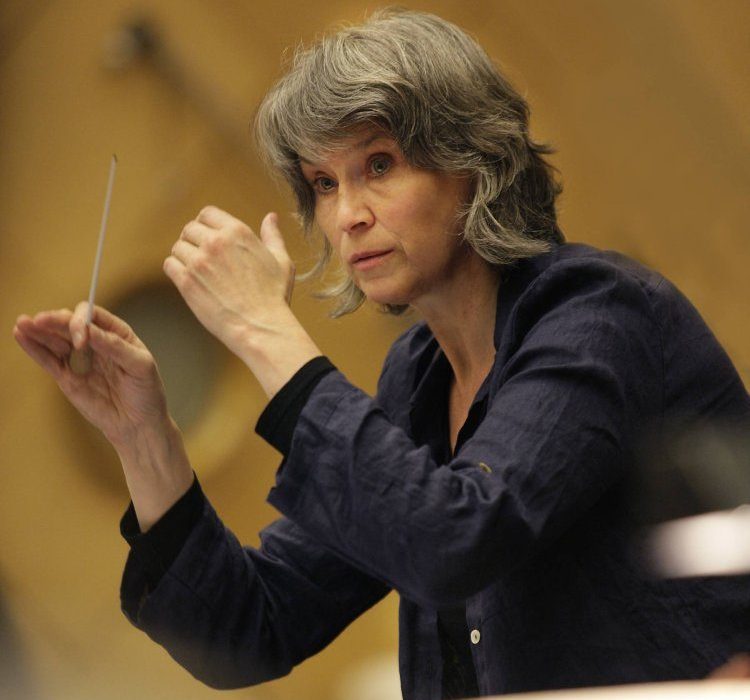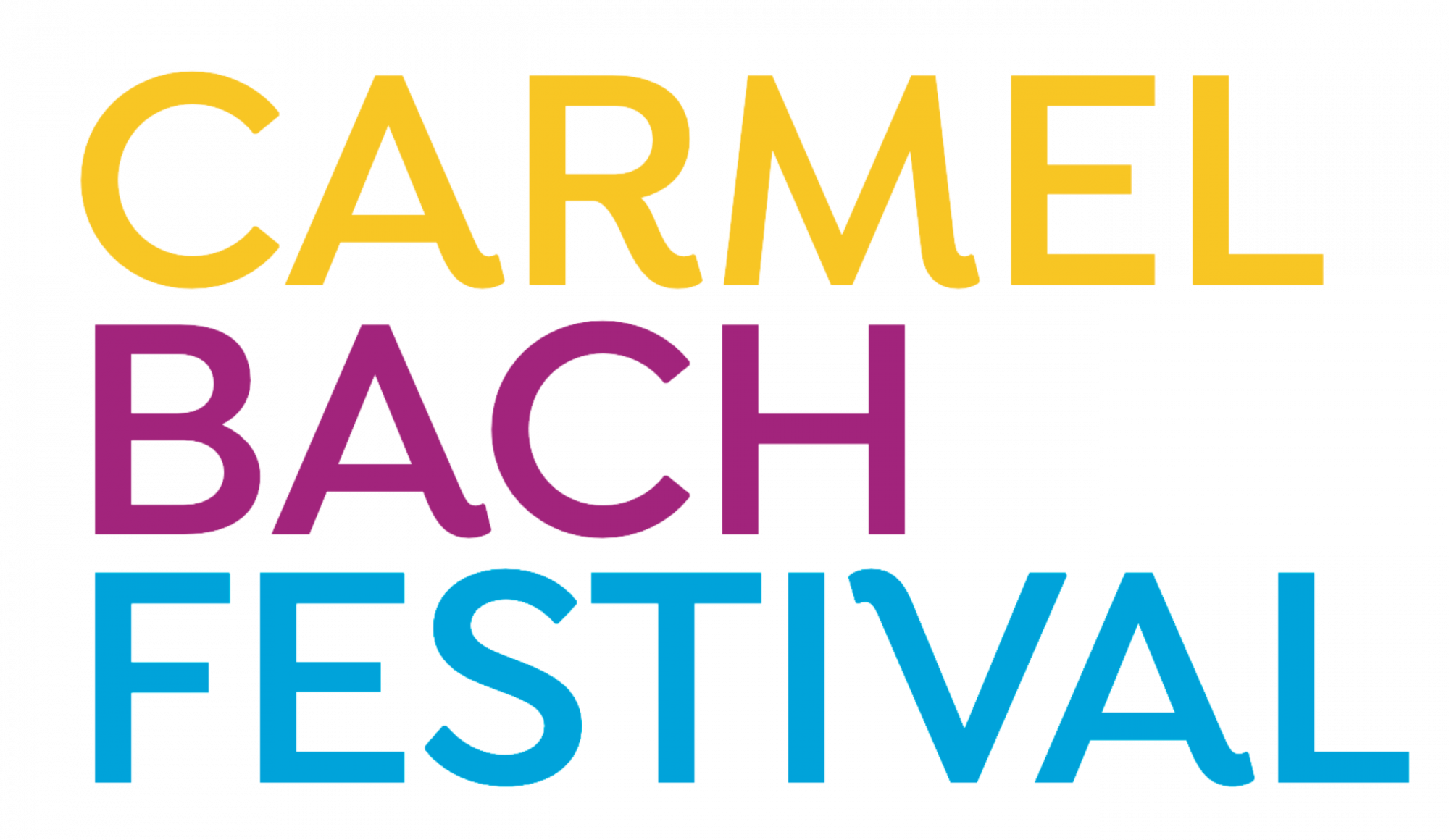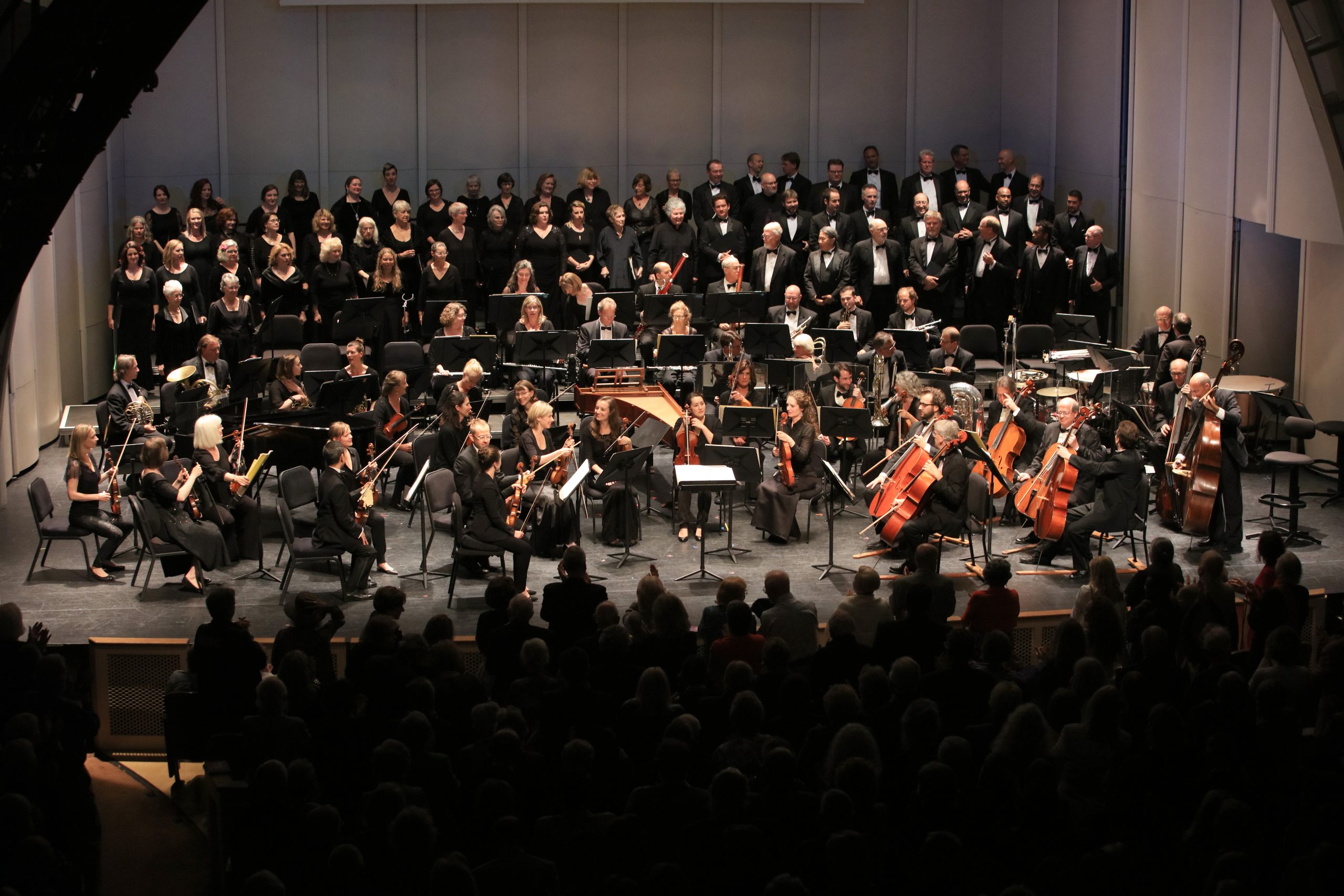
Beethoven Seven
Thursday, July 21, 7:30 PM
Artists: Festival Orchestra conducted by Grete Pedersen
| CHARLES IVES | The Unanswered Question | |
| (1874–1954) | ||
| LUCIANO BERIO | Rendering for Orchestra | |
| (1925 –2003) | I. Allegro | |
| II. Andante | ||
| Based on sketches for Symphony No. 10 by Franz Schubert | ||
| LUDWIG VAN BEETHOVEN | Symphony No. 7 in A Major, Op. 92 | |
| (1770–1827) | I. Poco sostenuto – Vivace | |
| II. Allegretto | ||
| III. Presto | ||
| IV. Allegro con brio | ||
Program Notes
Ives, The Unanswered Question
If Copland, Gershwin, and Bernstein among them have more or less defined the sound of “American classical music” for most listeners, it is Charles Ives whose genius was of a stereotypically American kind. He was a tinkerer, an experimenter, relentlessly inventive, proudly independent (in later years, anyway) of all European influences, scornful of timid listeners who feared new sounds. (And he had a “day job,” as so many American composers have had since; Ives’ was selling insurance.)
It is easy to feel that the essential Ives is the one who simply delights in all sounds, who builds up layer upon layer of song and hymnody and plain elemental shouts into one grand, jumbled, celebratory noise. But The Unanswered Question is a piece as clear and spare as a diagram, and yet it sounds like no one else.
In the background, made to sound as though it has always been going on and always will, is a vast, still, unfathomable hymn played by the strings. (Ives glosses it as “The Silences of the Druids — Who Know, See and Hear Nothing”). A muted trumpet repeatedly asks a plaintive five-note question (the “Perennial Question of Existence”). The “Answerers” are four flutes, who react to the question at first mildly, then with increasing violence and scorn, finally imitating it in savage mockery, like bullies on a school playground. Then they fall silent. The last question gets no answer at all, only the unresponsive serenity of the chorale that has never ceased. An equivocal parable, then, this piece we are clearly meant to sympathize with the forlorn “Questioner,” but neither he nor we ever learn whether the Question has a real answer.
— Michelle Dulak
Berio/Schubert Rendering for Orchestra
Luciano Berio is regarded as a gifted experimental composer adept at closely mirroring the voice of other composers without directly parroting. In Renderings for Orchestra, Berio honors Schubert’s sketches of his unfinished Tenth Symphony in D Major and adds his own twist of genius to fill in the gaps. Of Renderings for Orchestra, Luciano Berio wrote, “I have never been attracted to those operations of philological bureaucracy which sometimes lead musicologists to pretend they are Schubert (if not Beethoven) and ‘complete the Symphony as Schubert himself might have done’… As I worked on Schubert’s sketches, I set myself the target of following those modern restoration criteria that aim at reviving the old colors [as in picture restoration] without however trying to disguise the damage that time has caused…I tried to safeguard the obvious Schubert color. But not always.”
– Jennifer Candiotti
Beethoven Symphony No. 7
The premiere of Beethoven’s Seventh Symphony, on December 8, 1813, in University Hall in Vienna occurred as part of a benefit concert for Austrian and Bavarian soldiers wounded in the Napoleonic wars. The event was organized by Johann Nepomuk Maelzel, Court Mechanician to the Hapsburgs, the man who was credited with perfecting and patenting the metronome. He persuaded Beethoven to write a piece for a mechanical instrument called the “Panharmonicum” and the result was Wellington’s Victory, fully orchestrated with canons, martial music, and national themes such as Rule Britannia. The concert was a great success, inspiring applause “to the point of ecstasy.” Apart from the patriotic work, the Allegretto from the new symphony had the most positive reaction, and was encored at the premiere and subsequent performances. In the broad introduction (Poco sostenuto), longer than in any symphony so far written, Beethoven seems to be laying out raw materials for the coming movements. Rising scales suggest a grand architectural framing, prepared for melodies to flesh out the structure. Unusual key relationships — notably with the remote keys of F Major and C Major — are foreshadowed here. The interval of the descending half-step, germane to the entire symphony, is outlined in the chromatically descending bass line. Throughout the symphony, the note E is prominent in melodies as well as bass notes, and near the end of this introduction it becomes an obsession, passed back and forth, without harmony, between the woodwinds and violins. Finally, it is ignited by the dancing, dotted 6/8 rhythm that propels the entire Vivace.
The Allegretto is essentially a set of variations. After a plaintive chord in the winds, the low strings begin the dirge-like theme with its insistent rhythm. The variations build in complexity, culminating in a fugato, but are twice relieved by tranquil interludes in A Major. Even these episodes do not escape the inexorable rhythm in the bass.
The Presto has the expanded five-part scherzo form (ABABA) of Beethoven’s so-called middle period. The central appearance of the scherzo is marked sempre piano, creating an echo effect. The pastoral trio (Assai meno presto) features the winds with the violins providing a high drone. Far below, a persistent horn recalls and transforms the principal motive. The coda offers a brief reminiscence of the trio before the abrupt but decisive ending.
In the finale (Allegro con brio), sonata form and infectious rhythmic devices conspire for a movement of unceasing exuberance that Tovey called a “triumph of Bacchic fury.” Again, the note E takes on significance as a bass pedal point. In the gargantuan coda, after gradually descending by half-steps, the basses again settle on E, alternating with D-sharp, increasing the tension as the movement drives to its triumphant conclusion.
— Allen Whear
Grete Pedersen is a renowned conductor on the international scene. She has been music director of the Norwegian Soloists’ Choir since 1990. She is considered a pioneer for her work bringing folk music to new settings. She has led oratorios and choral symphonic works by J.S. Bach, Haydn, Bruckner, Bernstein, and Berio with leading Norwegian orchestras, Mahler Chamber Orchestra, Slovenian Philharmonic, Gulbenkian Orchestra & Choir, Yale Camerata, Oslo Sinfonietta, and Ensemble Allegria. Forthcoming projects include engagements with Croatian Radio Symphony & Choir, Orquesta y Coro de la Comunidad de Madrid, Eric Ericson Chamber Choir, Cappella Amsterdam, Netherlands Chamber Choir, Netherlands Bachvereniging, and Chamber Choir Ireland among others.
In 2019, Pedersen was appointed Knight 1st Class of the Royal Norwegian St. Olav’s Order for her merit and outstanding achievements in the arts and was awarded the distinguished Lindeman Prize to honor her significant contribution to the musical life of Norway. She has taught conducting at the Norwegian State Academy of Music since 1996.



